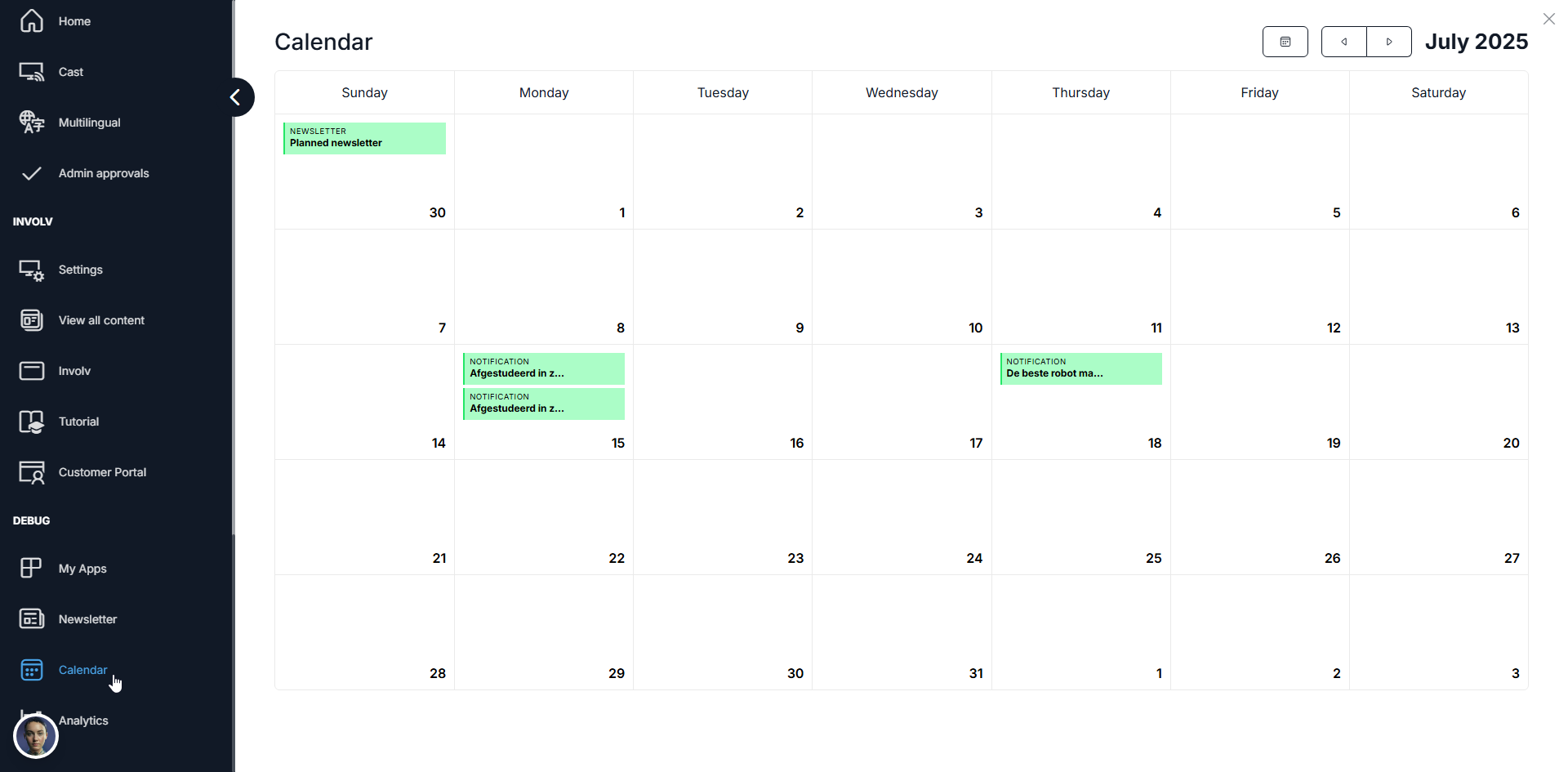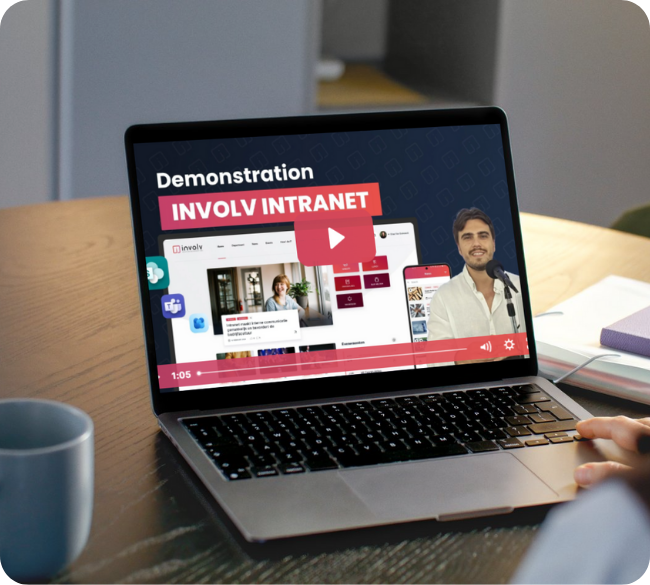A successful internal communications calendar is more than scheduling posts – it’s about shaping your message smartly and authentically. In this blog, we show how to move from goal → theme → campaign → content for 2026, with a clear three-wave rhythm that brings calm to your communications and moves your organization forward.
Start with the goal: what do you want to change?
Begin with the outcome you want: getting people up to speed with a new tool, reducing repeat questions, increasing engagement with change. Once the goal is clear, choose 2–4 themes that support it (e.g., safety, wellbeing, innovation, strategy). Then translate those choices into concrete campaigns with matching content and schedule them in your calendar – the calendar helps you organize, but you decide the content and the cadence.
Work with campaigns: short, focused and recognizable
Give each theme a short focus period. One main piece (article, video or guide) forms the foundation on your intranet. Around it, create compact variants: a summary for Teams/Outlook and, if useful, a short video. Everything points back to the same core page. This keeps your story consistent and measurable.
Publish in three waves: a rhythm that sticks
-
Announcement: signal what’s coming and why it matters to colleagues.
-
Launch: provide context and proof (case, quote, screenshot) and one clear action.
-
Follow-up: group questions, share results and point to what’s next.
Not everyone reads at the same time. Repeating without rehashing increases both recognition and action.
Write for the task: clear, concise and human
Colleagues want to know: what do you expect, what’s in it for me, where do I click? Keep your headline sharp, your core message to one sentence and end with a clear next step. Evidence helps – a mini case, a colleague’s quote, a “three steps” visual – but only if it supports the action. Avoid internal jargon layers.
Choose channels deliberately: one source, multiple doors
Make your intranet the content hub. Use Teams/Outlook and the mobile app to guide people there. Variations are fine – shorter, more visual – but they remain doorways to the same source. That’s how you avoid noise.
Plan a sustainable cadence: consistency over complexity
One main theme per month gives breathing room.
-
Week 1: preview or teaser.
-
Week 2: core content goes live.
-
Week 3: activation (how-to, Ask Me Anything…).
-
Week 4: answers and a look ahead.
Always leave some space for urgent updates. And reuse what works: start with a long article, turn it into a Q&A, then a short video and finally a visual step-by-step.
Make learning a habit: small moment, big impact
After each campaign, briefly review what worked, what to drop and what to repeat. Top performers become evergreen and return in future plans. You build on what you have instead of starting over.
Quick monthly inspiration
-
January: New Year update with a clear outlook – what does this mean for you?
-
February: make appreciation visible – compliments action or team spotlights.
-
March: learning & growth – simple onboarding to the learning platform with colleague tips.
-
April: privacy & security made tangible with familiar scenarios.
-
May: wellbeing in practice – micro-habits + low-threshold Q&A session.
-
June: sustainability from paper to practice – one action everyone can take.
-
July: smart handovers during vacation – clear handover guide.
-
August: “what you missed” – a quick guide with key links.
-
September: refresh processes – top questions answered, step by step.
-
October: cyber awareness without finger-wagging – let colleagues discover for themselves.
-
November: pulse feedback that genuinely feeds next year’s planning.
-
December: results, gratitude and a clear-eyed look ahead.
Tip: tie each idea to one explicit next step. Without action, it’s just information.
Working with Involv: from plan to publication
Use your intranet as the base and manage themes, owners and publication timings in the Content Calendar. Publish news via a standard process with a quality check (tone, accessibility, link check). That gives your calendar a recognizable cadence colleagues can trust.

Conclusion
A good calendar doesn’t predict the future; it provides direction. By planning from goals, working in short campaigns and publishing deliberately, you’ll get less noise and more results – the exact rhythm you want to feel in 2026.



